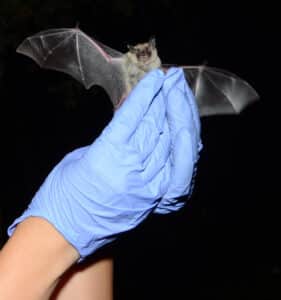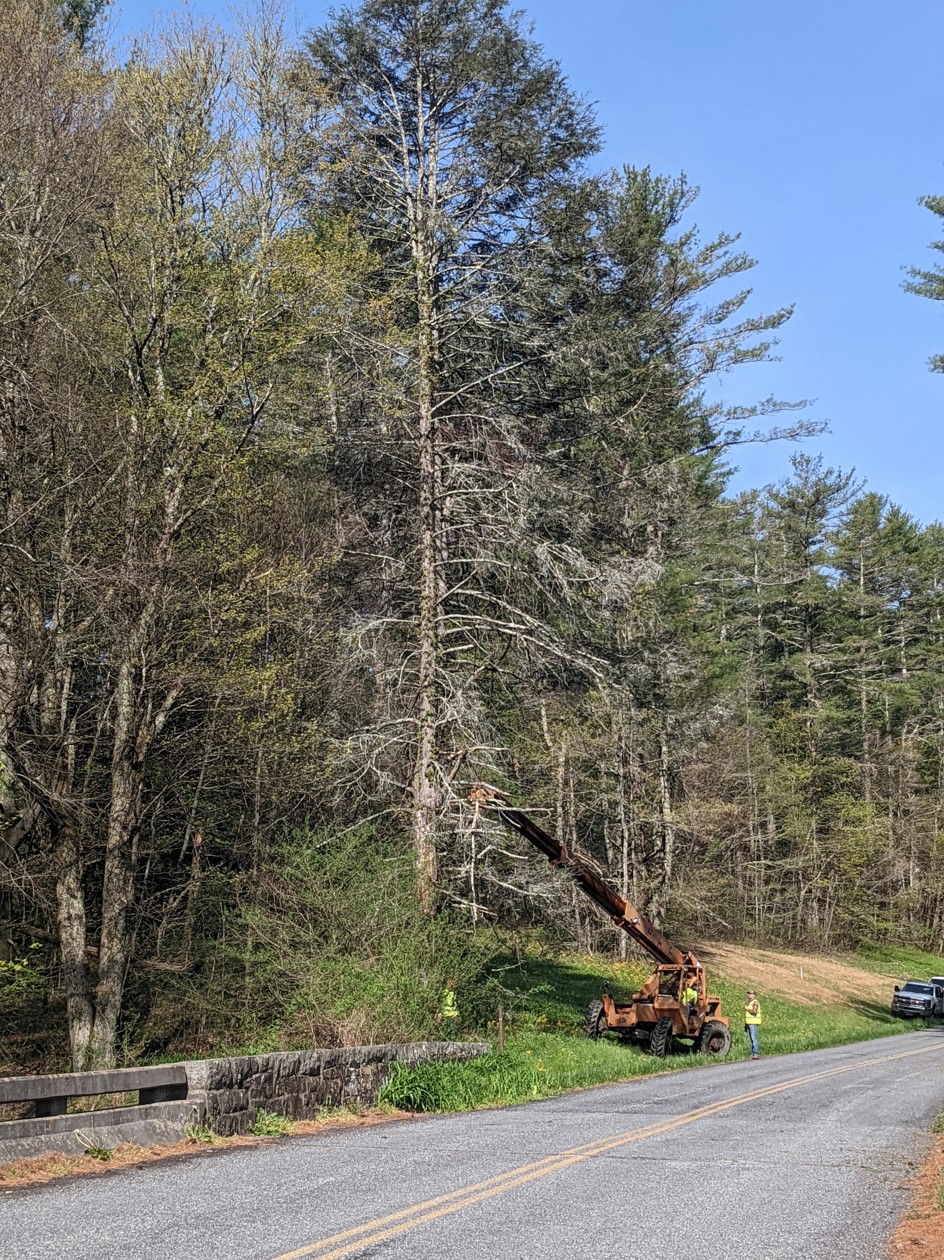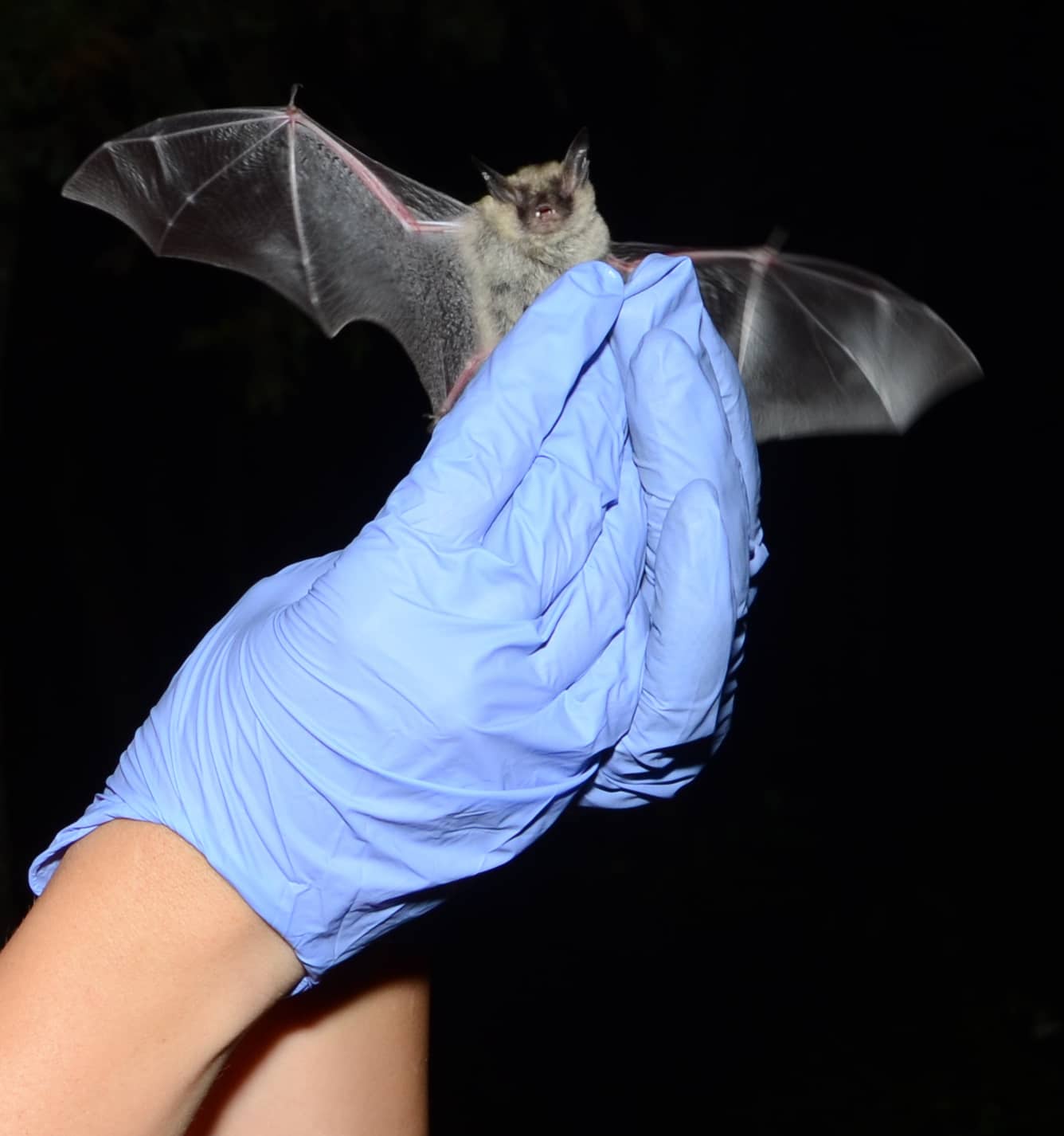August 29, 2023

Bats are an important part of our ecosystem, playing a vital role in maintaining ecological balance. However, many bat species are threatened or endangered due to habitat loss, climate change, and disease, making it important for us to protect and conserve them.
The Northern Long-eared bat (Myotis septentrionalis) species has experienced population declines of 97-100% across approximately 80% of its range due to White-nose syndrome, a fungal known to affect bats.
Effective March 31, 2023, the US Fish and Wildlife Service (USFWS) reclassified the Northern Long-Eared Bat as an endangered species under the Endangered Species Act of 1973. The initial reclassification of the Northern Long-Eared Bat from a threatened species to an endangered species
had been temporarily delayed to finalize conservation tools and guidance documents for implementing the rule. USWFS conservation tools and guidance documents are available here.
Many state and federally-funded and/or permitted projects require evaluation of threatened and endangered species.
Threatened and Endangered (T&E) Species Reviews
Northern long-eared bats, Indiana bats, and Gray bats are three of the many species routinely evaluated by S&ME as part of our threatened and endangered (T&E) species reviews.
S&ME’s bat survey capabilities include:
- Phase I Habitat assessments – Routinely performed by qualified S&ME biologists as part of property due diligence evaluations.
- Emergence surveys – Performed by experienced and qualified S&ME biologists prior to tree-clearing efforts.
- Acoustic surveys – Performed when required and in coordination with USFWS.
Project Highlights
Confidential Energy Client Acoustic Survey
Mount Holly, Gaston County, North Carolina
Our team conducted a habitat assessment and acoustic survey at a confidential site in Mt. Holly, North Carolina. S&ME performed a Phase I Summer Habitat Assessment at the site and determined that potential summer roosting habitat for the proposed endangered tricolored bat (Perimyotis subflavus) exists within the 41-acre limits of disturbance. In anticipation of the species being listed as endangered under Section 7 of the Endangered Species Act (ESA) and to determine whether the tricolored bat was present on the site, the team performed acoustic monitoring in accordance with the USFWS Range-Wide Indiana Bat and Northern Long-eared Bat Summer Survey Guidelines (March 2023). S&ME deployed four acoustic monitors to run for four consecutive nights or until 14 detector nights were achieved. The monitors included Anabat ™ SD-2 and Anabat™ Swift. Bat calls were filtered with BCID v2.8b and reviewed by S&ME using Analook™. Survey results were submitted to USFWS for concurrence.
Laurel Fork Bridge Replacement
Ashe County, North Carolina
The Federal Highway Administration (FHWA) is replacing the 545-foot-long, three-span bridge located on the Blue Ridge Parkway over Laurel Fork in Ashe County, North Carolina. S&ME provided bat emergence surveys in addition to several services including geotechnical investigation and recommendations, construction observations and testing, and crosshole sonic logging to support this project.
 The project included bat emergence surveys prior to tree clearing. Because suitable habitat was observed, the emergence surveys were performed immediately prior to tree clearing. S&ME also performed a second trip to look for roosting bats under the bridge or in the rock abutments prior to bridge demolition.
The project included bat emergence surveys prior to tree clearing. Because suitable habitat was observed, the emergence surveys were performed immediately prior to tree clearing. S&ME also performed a second trip to look for roosting bats under the bridge or in the rock abutments prior to bridge demolition.

S&ME completed an additional field visit immediately before demolition efforts were set to occur to assess the existing bridge structure over Laurel Fork using applicable portions of the 2020 Standard Operating Procedures for NCDOT Preliminary Bat Habitat Assessments (Structures, Caves, and Mines), including completing the associated Bat Habitat Assessment form.
Per the USFWS requirements, if evidence of bats or sightings were made during the survey of the bridge structure, coordination with the USFWS would have occurred immediately to determine next steps.
Phase I Bat Habitat Assessment
Roanoke Rapids, North Carolina
S&ME conducted a Phase I Bat Habitat Assessment for the development of a natural gas line in Roanoke Rapids, North Carolina on a project area totaling 2.52 acres and 2,750 linear feet. The targeted assessment included the identification of potential roost trees suitable for the northern long-eared bat (Myotis septentrionalis). Suitable roost trees included those characterized by a diameter greater than three inches at breast height and with features such as exfoliating bark, crevices, or cracks. Trees were observed for features suitable for roosting and were geolocated using a sub-meter GPS device.
 Habitat suitable for the species was documented on-site. S&ME used the USFWS Information for Planning and Consultation (IPaC) Determination Key following the habitat assessment and generated a determination of “May Affect, Not Likely to Adversely Affect.” No further summer or hibernacula surveying was required following the IPaC-assisted determination.
Habitat suitable for the species was documented on-site. S&ME used the USFWS Information for Planning and Consultation (IPaC) Determination Key following the habitat assessment and generated a determination of “May Affect, Not Likely to Adversely Affect.” No further summer or hibernacula surveying was required following the IPaC-assisted determination.
Read more information on threatened and endangered species reviews.

